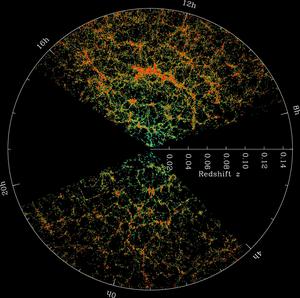Glossary term: Décalage vers le rouge
Description: Ce terme peut désigner trois effets différents : le décalage Doppler, le décalage cosmologique ou le décalage gravitationnel. Le décalage vers le rouge Doppler est le contraire du décalage vers le bleu ; dans le cas du décalage vers le rouge, la source émettant le rayonnement électromagnétique s'éloigne de l'observateur, et la longueur d'onde du rayonnement électromagnétique est donc étirée vers des longueurs d'onde plus grandes (plus rouges). Ce phénomène est similaire à l'effet Doppler dans le contexte des ondes sonores. Le décalage vers le rouge cosmologique résulte du fait que le rayonnement électromagnétique émis par une source est décalé vers des longueurs d'onde plus grandes à cause de l'expansion physique de l'espace, contrairement à l'effet Doppler qui lui est dû au mouvement relatif. Le décalage gravitationnel vers le rouge désigne l'effet par lequel la longueur d'onde du rayonnement électromagnétique émis par une source est décalé vers des longueurs d'onde plus grandes, ou plutôt les photons associés perdent de l'énergie en essayant de quitter une région (puits gravitationnel) où la gravité est plus forte.
Related Terms:
See this term in other languages
Term and definition status: The original definition of this term in English have been approved by a research astronomer and a teacher The translation of this term and its definition is still awaiting approval
The OAE Multilingual Glossary is a project of the IAU Office of Astronomy for Education (OAE) in collaboration with the IAU Office of Astronomy Outreach (OAO). The terms and definitions were chosen, written and reviewed by a collective effort from the OAE, the OAE Centers and Nodes, the OAE National Astronomy Education Coordinators (NAECs) and other volunteers. You can find a full list of credits here. All glossary terms and their definitions are released under a Creative Commons CC BY-4.0 license and should be credited to "IAU OAE".
Related Media
SDSS Redshift Map
Credit: M. Blanton and Sloan Digital Sky Survey credit link
License: CC-BY-4.0 Creative Commons Attribution 4.0 International (CC BY 4.0) icons









